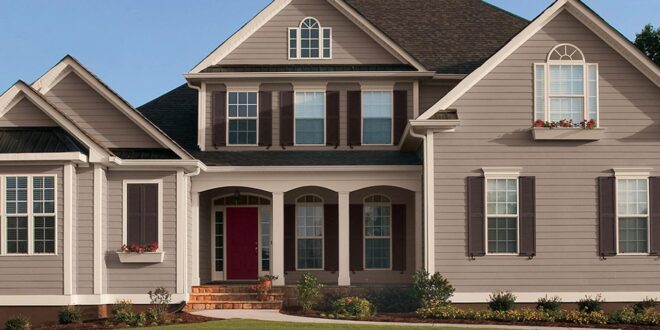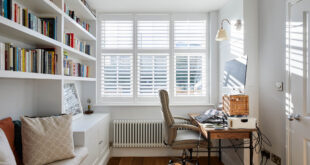Introduction: The Untapped Potential of Your Home’s Exterior
Think about it: your home’s exterior is the first thing anyone sees. It’s the handshake, the opening line, the visual invitation into your personal world. It sets the tone, broadcasts your style, and even subtly influences your property value. Too often, we focus solely on interior design, neglecting the immense potential of a well-considered house outside design. This isn’t just about aesthetics; it’s about creating a cohesive, welcoming, and functional space that extends beyond your walls.
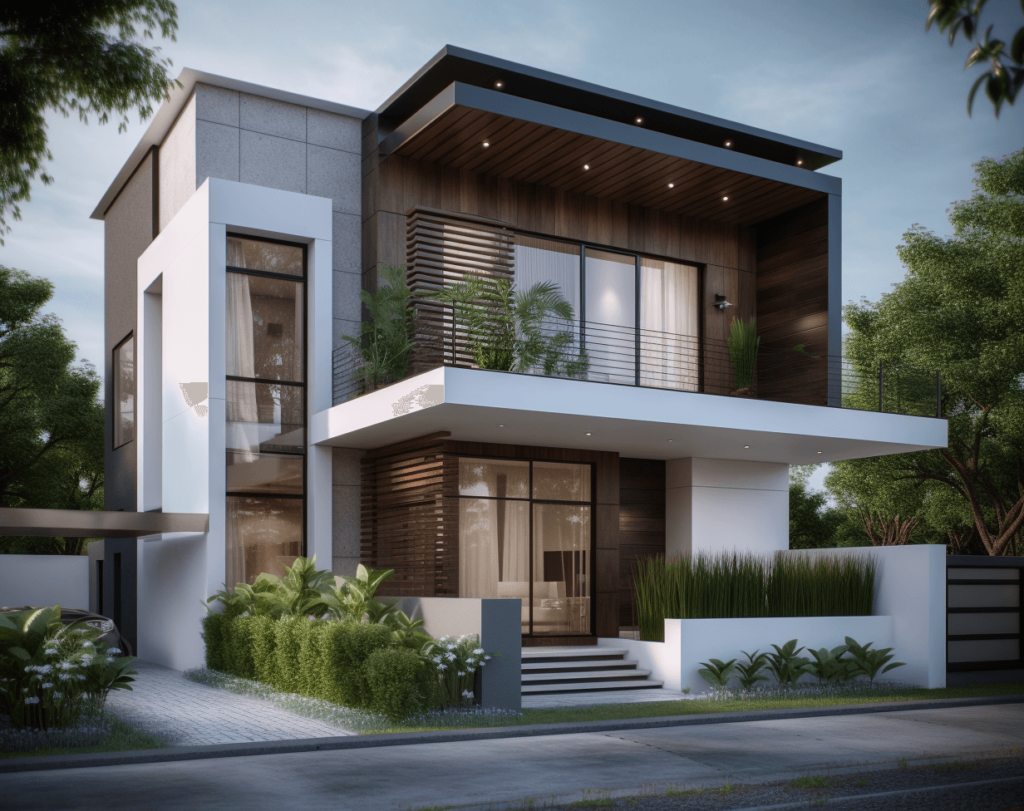
In this comprehensive guide, we’ll delve into the multifaceted world of house outside design, exploring everything from architectural styles and landscaping principles to material choices and outdoor lighting. We’ll equip you with the knowledge and inspiration to transform your home’s exterior into a captivating masterpiece that reflects your unique personality and enhances your everyday life. Prepare to unlock the secrets of curb appeal and discover how a thoughtful outside design can elevate your entire property.
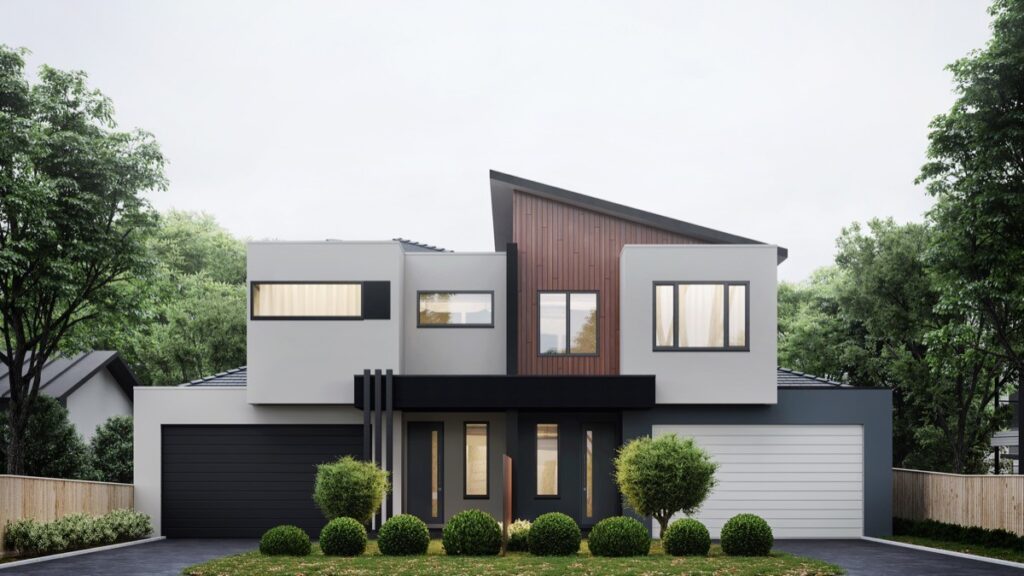
Understanding Architectural Styles: A Foundation for Design
Before diving into specific design elements, it’s crucial to understand your home’s architectural style. This provides a foundational framework for all subsequent decisions, ensuring a harmonious and cohesive aesthetic. Here’s a glimpse into some popular architectural styles and their characteristic features:
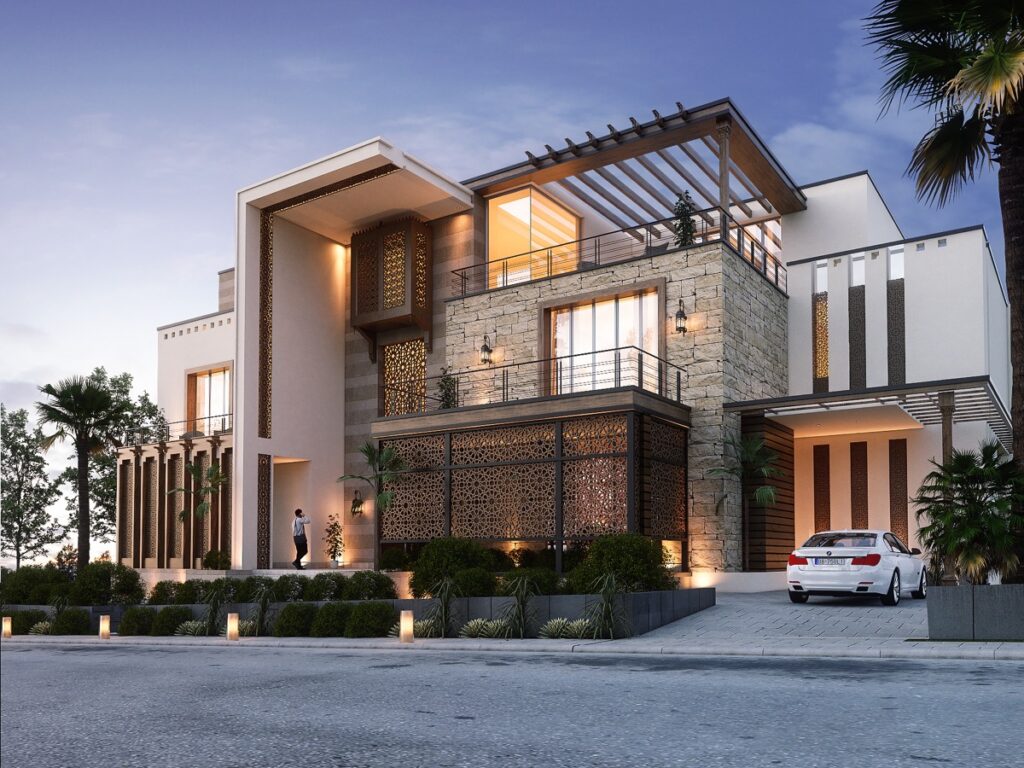
Colonial
Characterized by symmetry, simple lines, and a formal appearance, Colonial homes often feature evenly spaced windows, a central entrance, and a pitched roof. Think classic Americana with a touch of elegance.
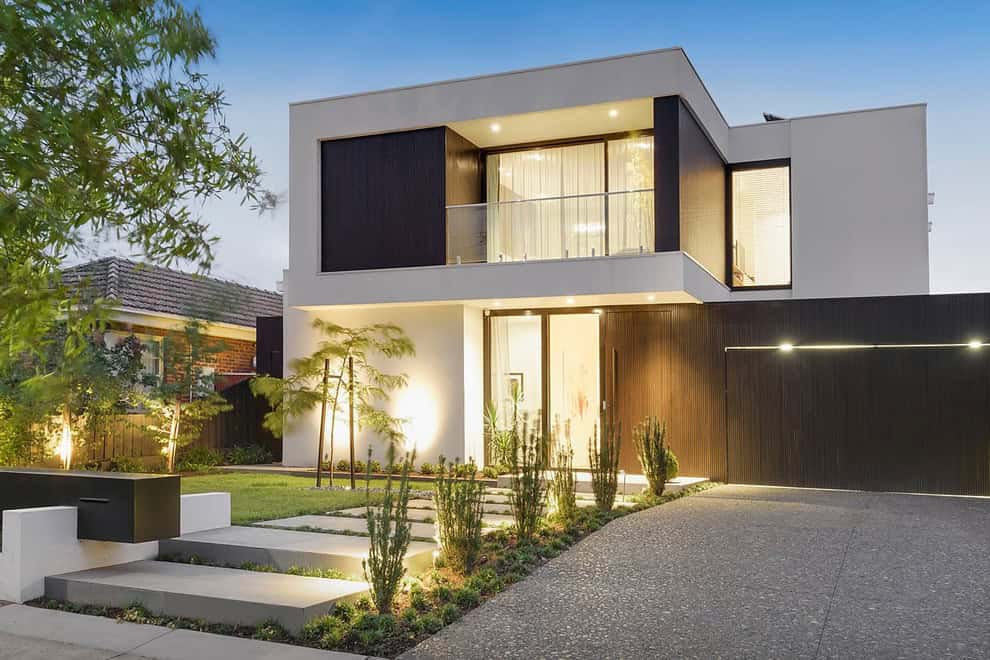
Victorian
Ornate and elaborate, Victorian homes are known for their intricate details, decorative trim, bay windows, and asymmetrical design. They exude a sense of grandeur and historical charm.

Ranch
Typically single-story and sprawling, Ranch homes emphasize horizontal lines and a low-pitched roof. They are often associated with a casual, relaxed lifestyle and a connection to the surrounding landscape.
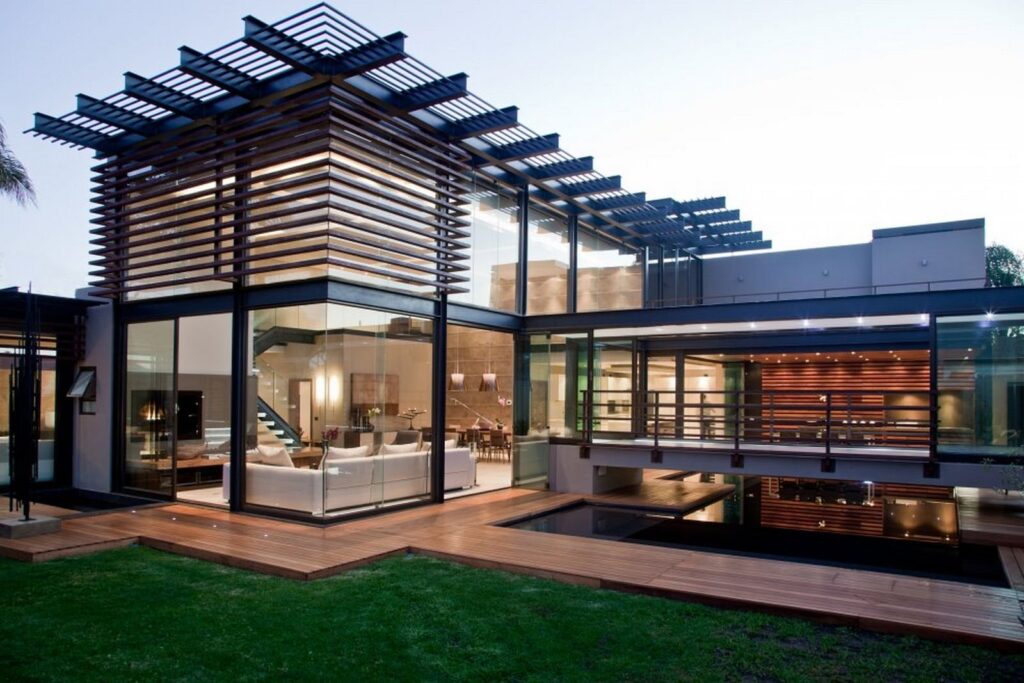
Craftsman
Emphasizing natural materials and handcrafted details, Craftsman homes showcase exposed rafters, wide eaves, and a prominent front porch. They embody a sense of warmth, authenticity, and connection to nature.
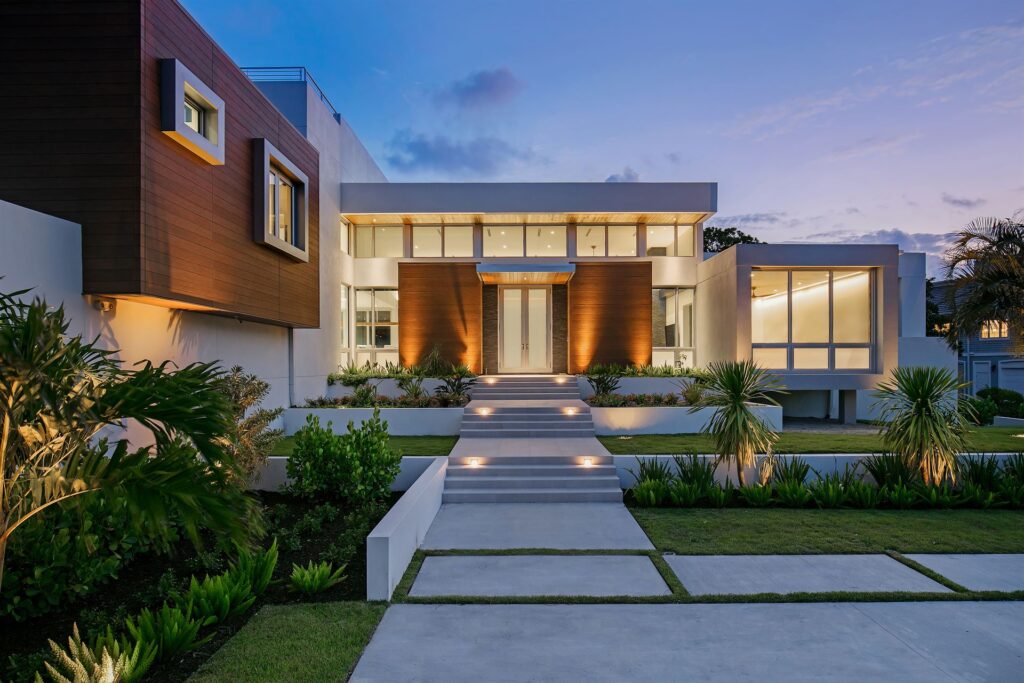
Modern
Clean lines, minimalist design, and a focus on functionality define Modern homes. They often feature large windows, flat roofs, and a sleek, uncluttered appearance.
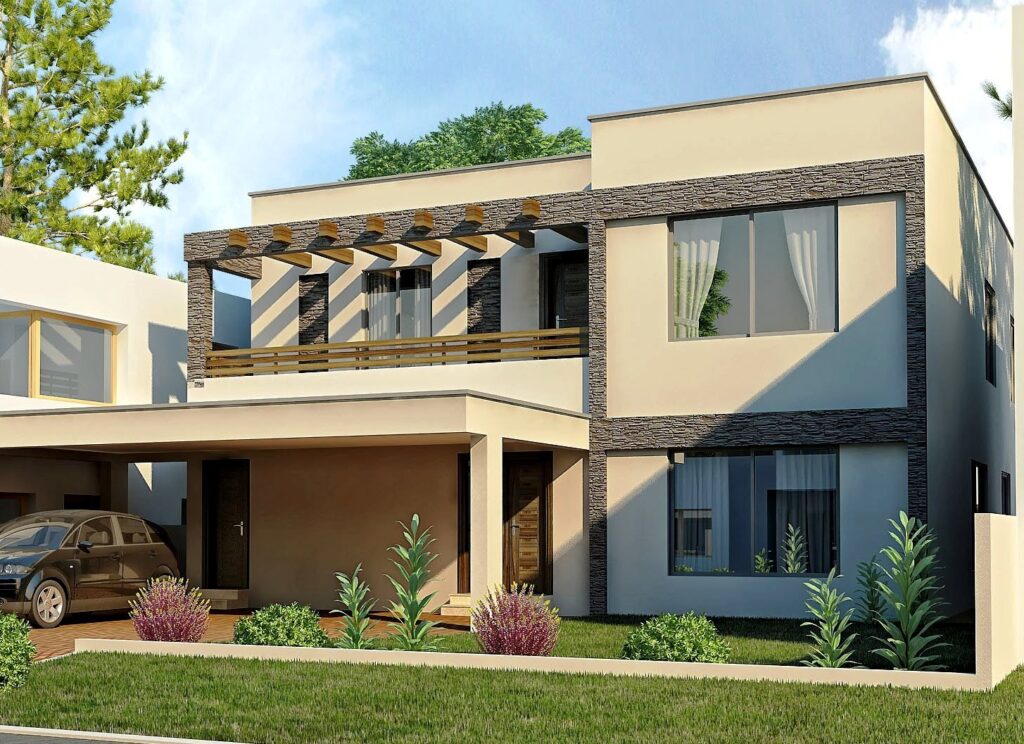
Tudor
Distinguished by steeply pitched roofs, decorative half-timbering, and prominent chimneys, Tudor homes evoke a sense of old-world charm and European influence.

Identifying your home’s architectural style is the first step towards creating a complementary outside design. Research the key features and historical context of your style to inform your choices regarding color palettes, landscaping, and exterior details.

The Principles of Landscaping: Creating Harmony and Balance
Landscaping is arguably the most impactful element of house outside design. It’s the art of shaping the natural environment to complement your home’s architecture and create a visually appealing and functional outdoor space. Several key principles guide effective landscaping:
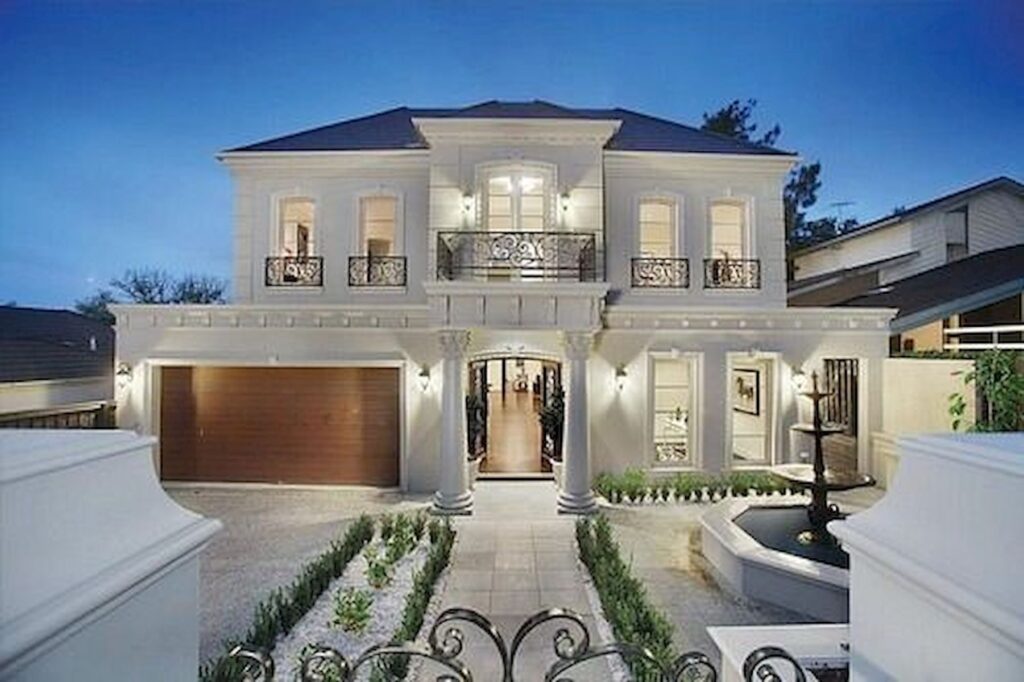
Balance
Balance refers to the visual equilibrium of your landscape. Symmetrical balance involves mirroring elements on either side of a central axis, creating a formal and structured appearance. Asymmetrical balance, on the other hand, uses different elements of varying sizes and shapes to achieve a sense of equilibrium, resulting in a more natural and dynamic look. Consider the architectural style of your home when choosing a balance style.
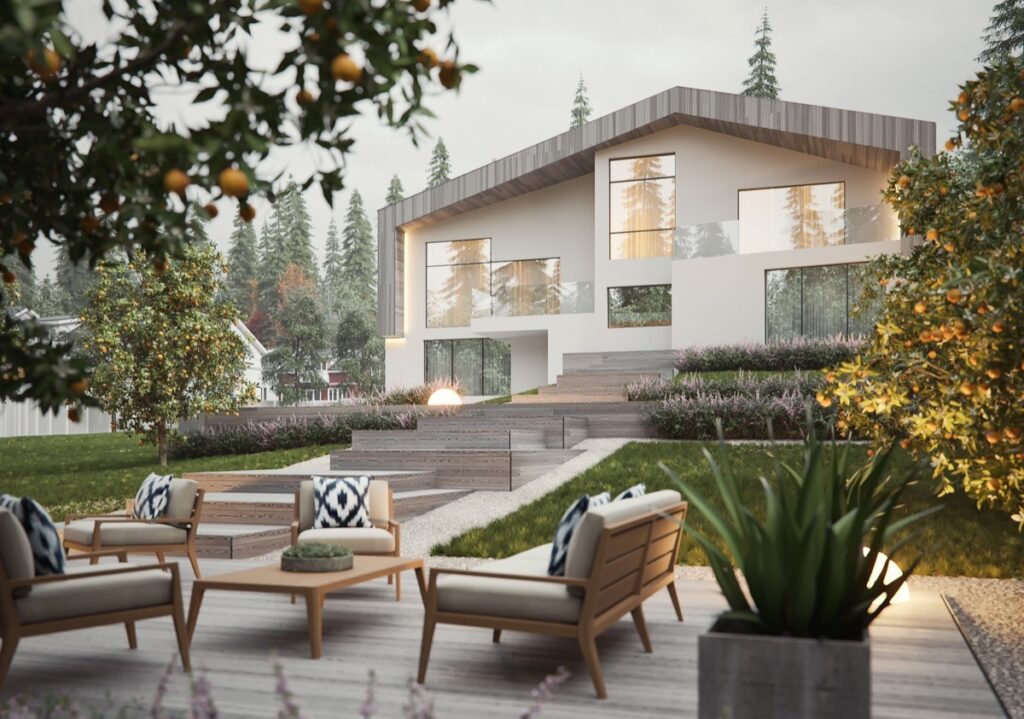
Proportion
Proportion is the relationship between the size of different elements in your landscape. Ensure that plants, trees, and other features are appropriately scaled to your home and the surrounding environment. Overly large trees can dwarf a small house, while tiny shrubs can get lost in a vast landscape.
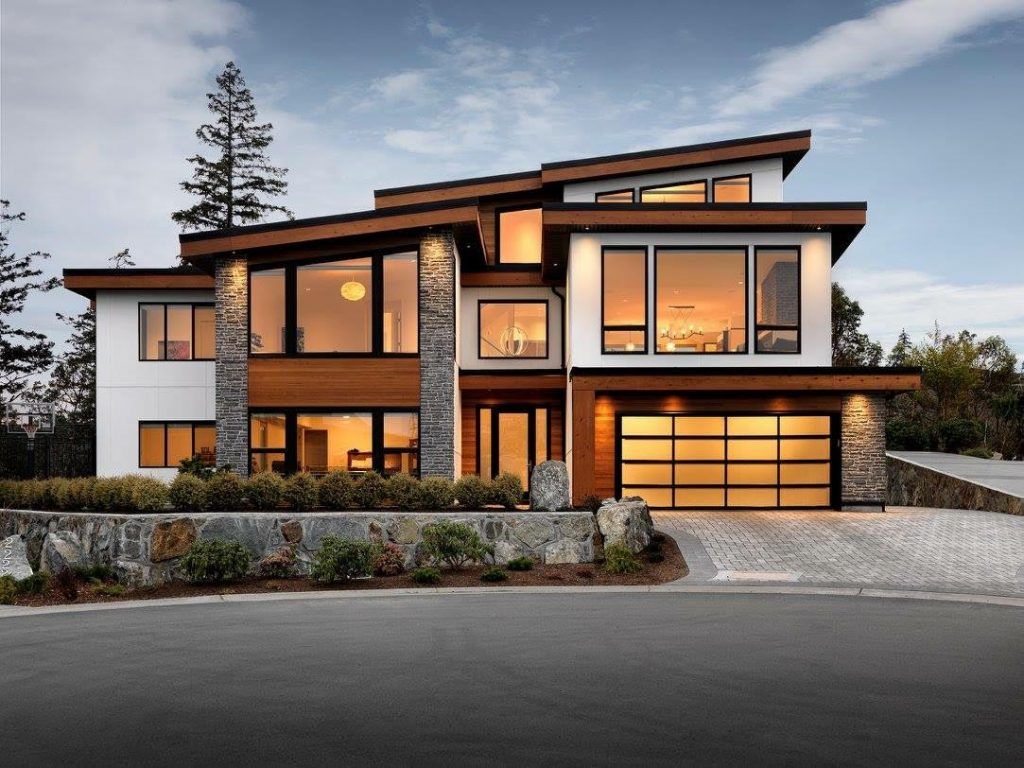
Unity
Unity refers to the overall sense of cohesion and harmony in your landscape. This can be achieved by repeating colors, shapes, and textures throughout the design. A unified landscape feels intentional and well-planned, rather than a collection of disparate elements.
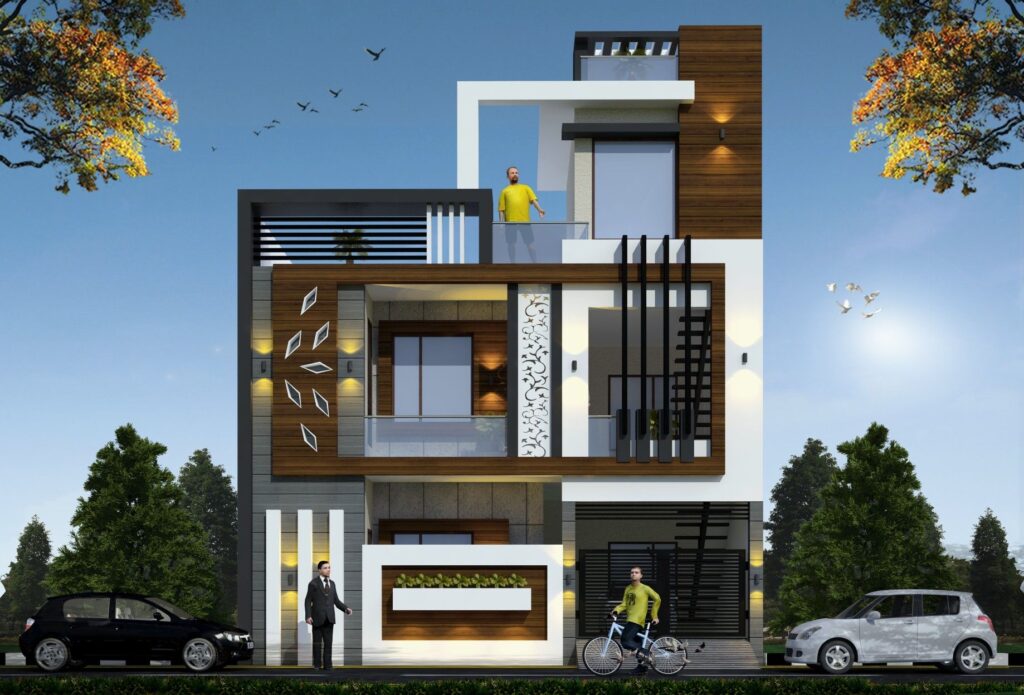
Rhythm
Rhythm is the repetition of elements in a landscape to create a sense of movement and visual interest. This can be achieved by planting rows of similar flowers or shrubs, or by using paving stones to create a winding pathway.

Emphasis
Emphasis involves creating focal points in your landscape to draw the eye and add visual interest. This can be achieved by planting a specimen tree, installing a water feature, or creating a colorful flower bed.
Color Palettes: Setting the Mood and Enhancing Curb Appeal
Color plays a crucial role in house outside design, influencing the overall mood and aesthetic of your property. Choosing the right color palette can dramatically enhance curb appeal and create a welcoming atmosphere. Consider the following factors when selecting colors:
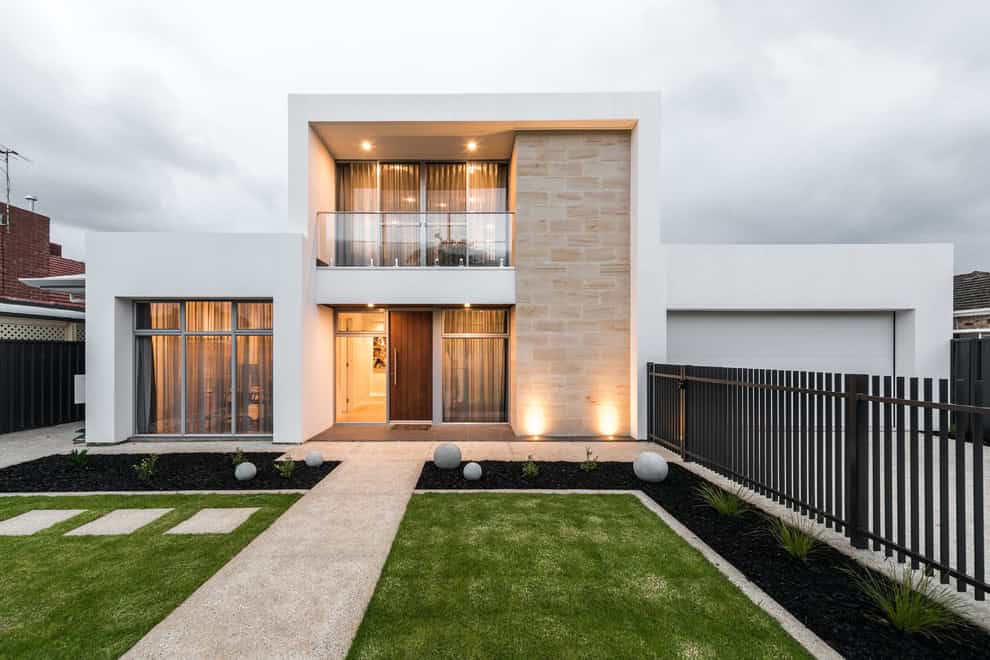
Architectural Style
The architectural style of your home should influence your color choices. Traditional styles often benefit from classic and understated colors, while modern styles can handle bolder and more contemporary hues. Research historically accurate color palettes for your architectural style to ensure a cohesive and authentic look.
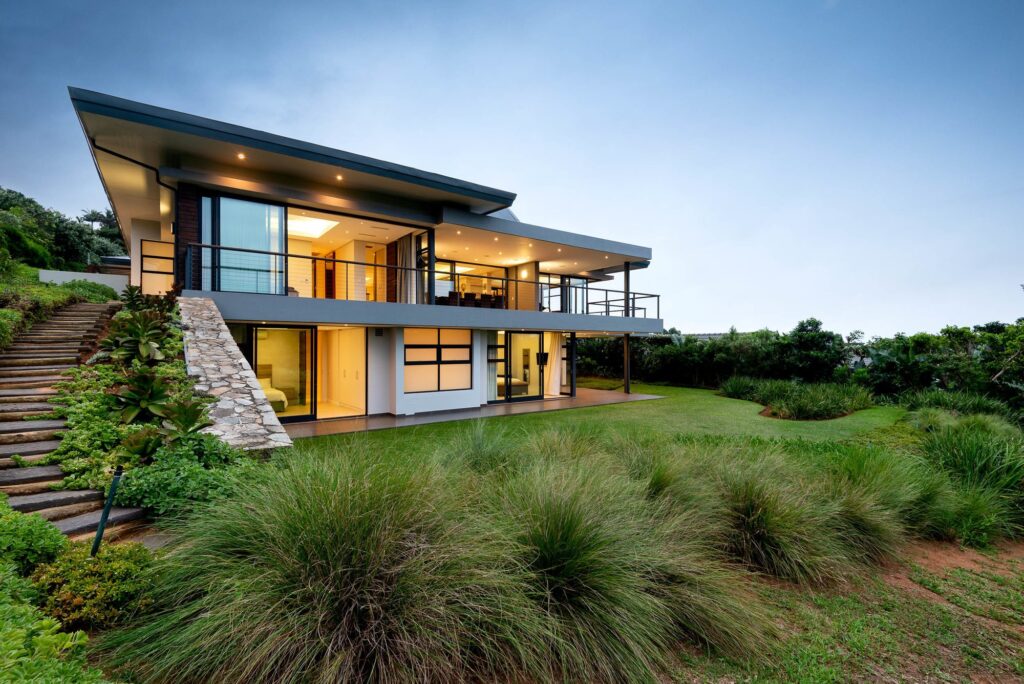
Surrounding Environment
Consider the colors of the surrounding landscape when choosing your exterior paint colors. Aim for a palette that complements the natural environment and creates a sense of harmony. For example, a house surrounded by lush greenery might benefit from warm, earthy tones.
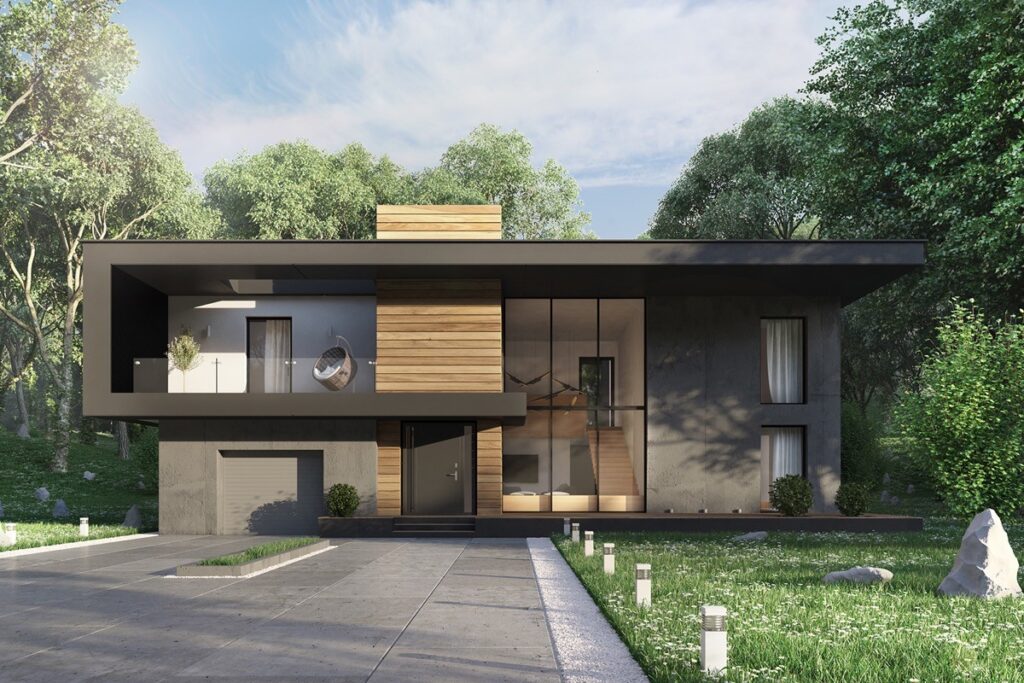
Personal Preferences
Ultimately, your color choices should reflect your personal preferences and style. Choose colors that you find visually appealing and that create the desired mood for your home. Don’t be afraid to experiment with different colors and combinations to find the perfect palette.
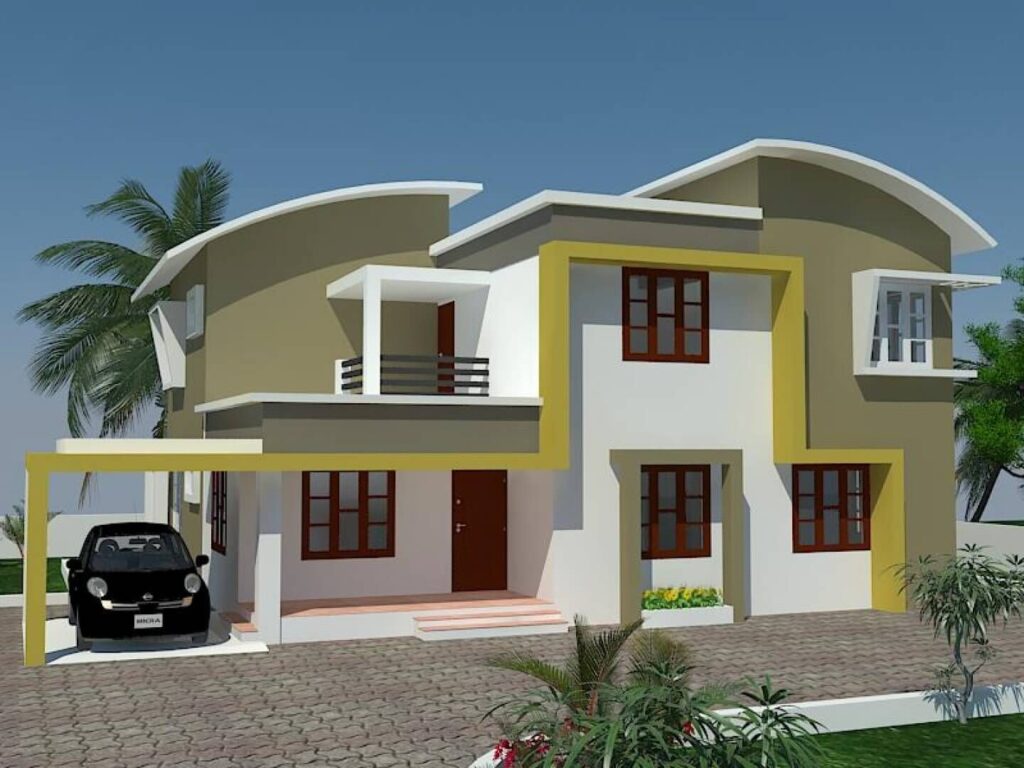
Common Color Palette Strategies
- Monochromatic: Using different shades of the same color for a unified and sophisticated look.
- Analogous: Choosing colors that are adjacent to each other on the color wheel for a harmonious and balanced palette.
- Complementary: Pairing colors that are opposite each other on the color wheel for a bold and eye-catching contrast.
- Triadic: Selecting three colors that are equally spaced on the color wheel for a vibrant and dynamic palette.
Material Choices: Balancing Aesthetics and Durability
The materials you choose for your home’s exterior play a significant role in its appearance, durability, and maintenance requirements. Consider the following factors when selecting materials:
Climate
Your local climate should be a primary consideration when choosing exterior materials. Opt for materials that are resistant to weathering, moisture, and extreme temperatures. For example, in coastal areas, materials that are resistant to salt air are essential.
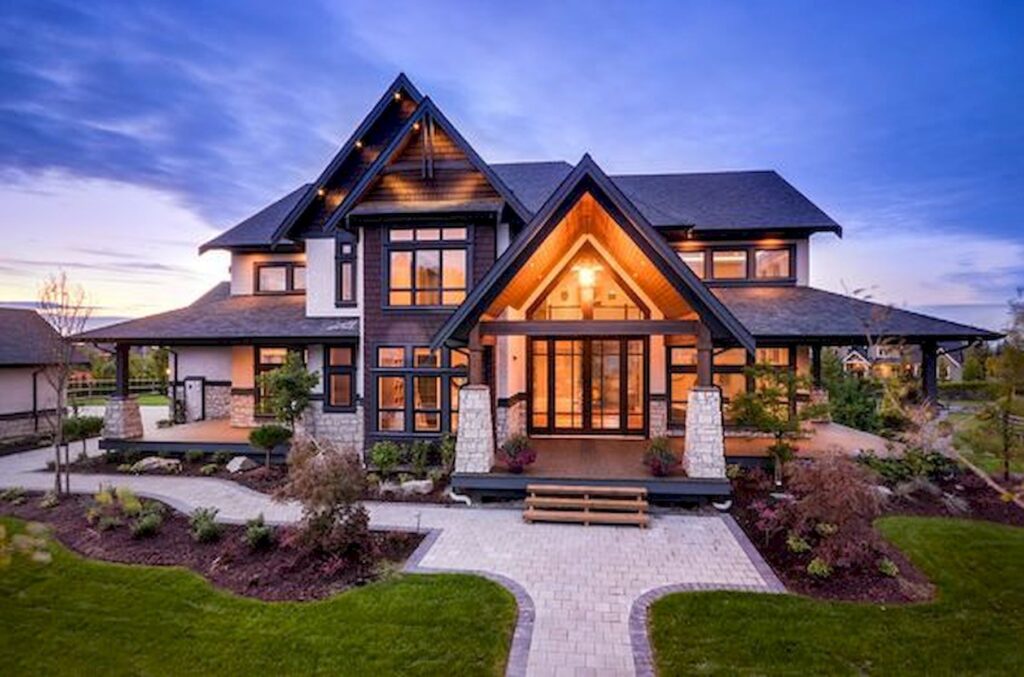
Maintenance
Consider the maintenance requirements of different materials before making a decision. Some materials, such as wood, require regular painting or staining to prevent rot and decay. Others, such as vinyl siding, are relatively low-maintenance.
Budget
Your budget will also influence your material choices. Some materials, such as natural stone, are more expensive than others. However, investing in high-quality materials can often save you money in the long run by reducing maintenance costs and increasing the lifespan of your home’s exterior.
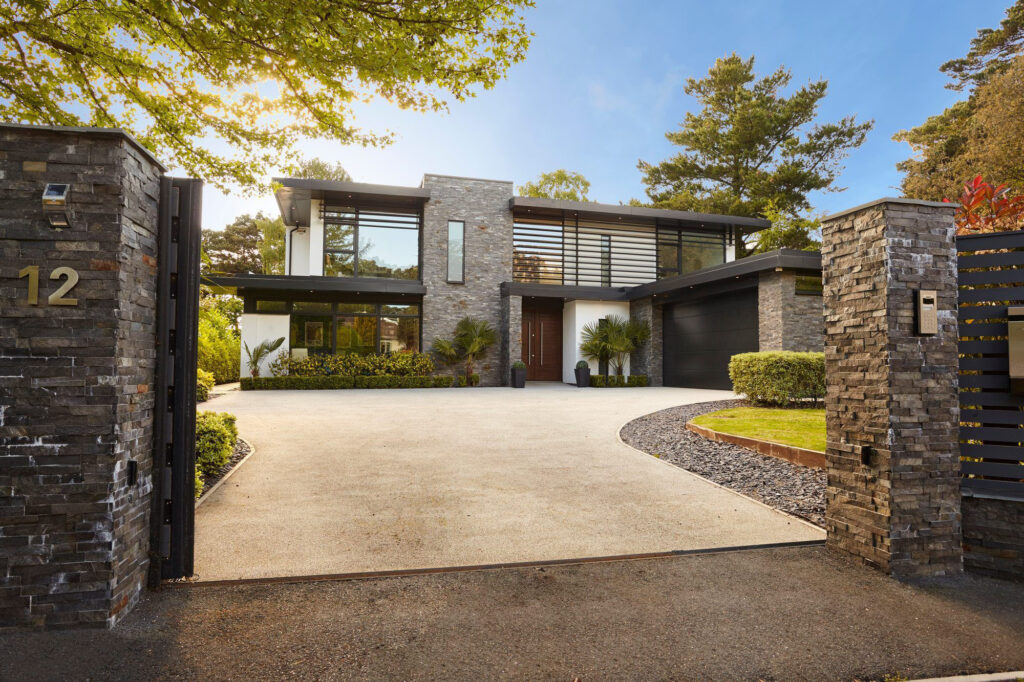
Common Exterior Materials
- Siding: Vinyl, wood, fiber cement, brick, stone
- Roofing: Asphalt shingles, metal roofing, tile roofing, wood shakes
- Windows and Doors: Wood, vinyl, aluminum, fiberglass
- Trim: Wood, PVC, composite materials
Outdoor Lighting: Illuminating Your Home’s Beauty and Enhancing Security
Outdoor lighting is an essential element of house outside design, enhancing both the aesthetic appeal and the security of your property. Well-placed lighting can highlight architectural features, create a welcoming ambiance, and deter potential intruders. Consider the following lighting strategies:

Path Lighting
Illuminate walkways and pathways to improve safety and visibility. Low-voltage path lights are a popular choice for their energy efficiency and ease of installation.
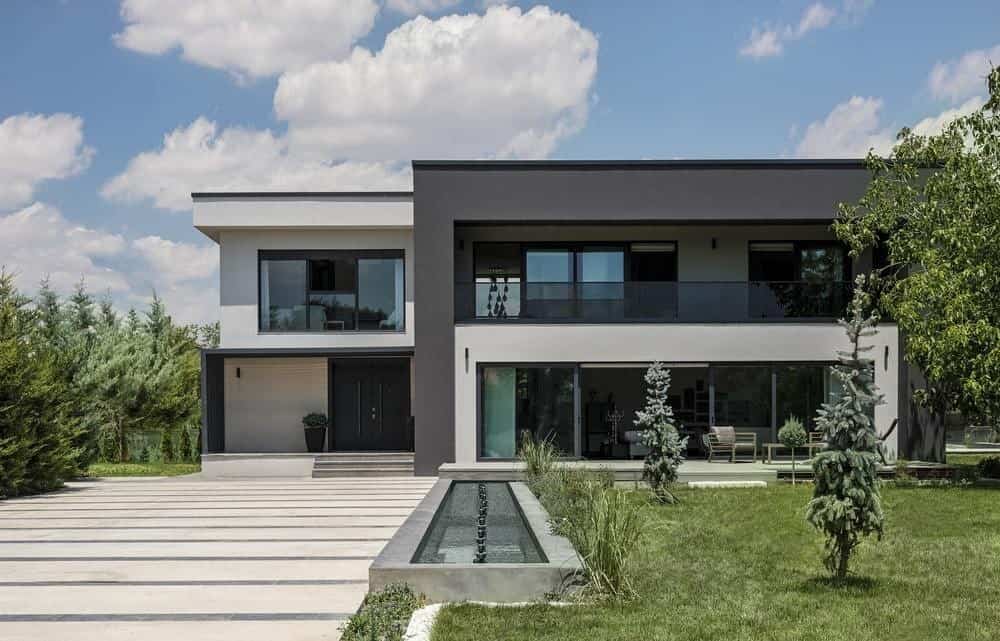
Accent Lighting
Use accent lighting to highlight architectural features, such as columns, arches, or landscaping elements. Uplighting trees or shrubs can create a dramatic effect.
Security Lighting
Install motion-sensor security lights to deter intruders and improve safety. Place lights near entrances, garages, and other vulnerable areas.
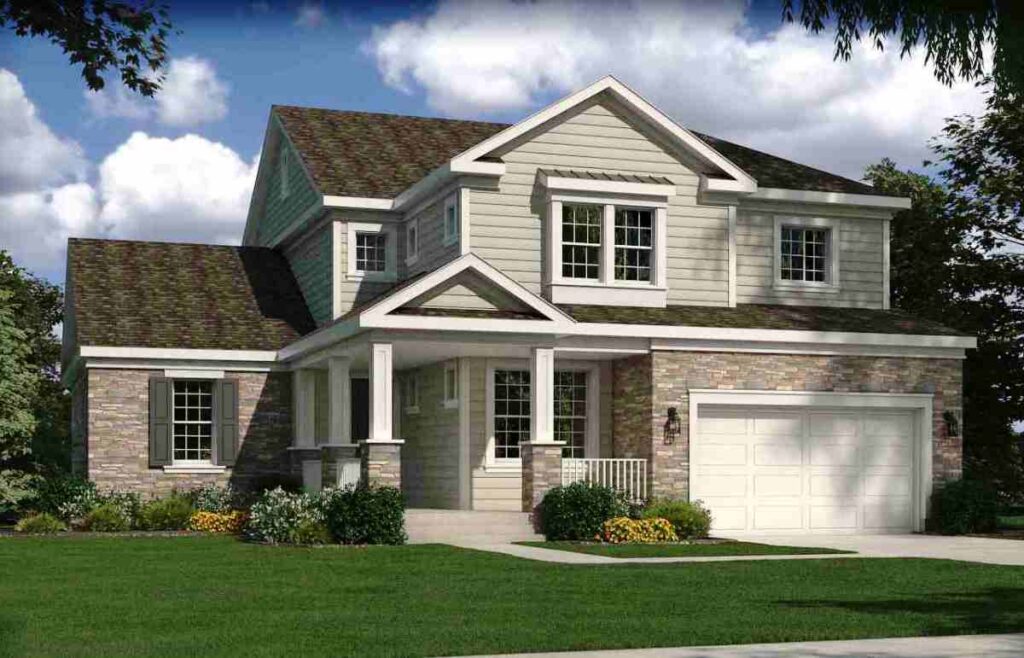
Porch Lighting
A well-lit porch creates a welcoming atmosphere and improves safety. Choose fixtures that complement your home’s architectural style and provide adequate illumination.
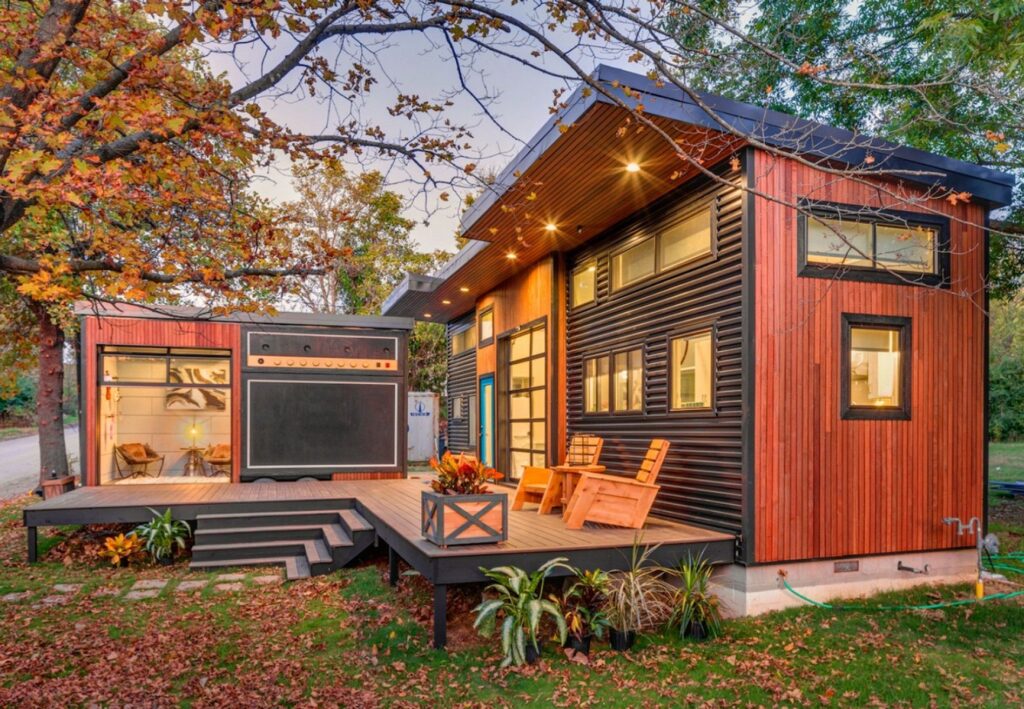
Types of Outdoor Lighting Fixtures
- Post Lights: Ideal for illuminating driveways and pathways.
- Wall-Mounted Lights: Perfect for flanking doorways and garages.
- Spotlights: Used to highlight specific features or areas.
- String Lights: Add a festive and whimsical touch to outdoor spaces.
The Importance of Hardscaping: Defining Spaces and Adding Functionality
Hardscaping refers to the non-living elements of your landscape, such as patios, walkways, retaining walls, and driveways. These features provide structure, functionality, and visual interest to your outdoor space. Carefully planned hardscaping can define spaces, create pathways, and add valuable outdoor living areas.
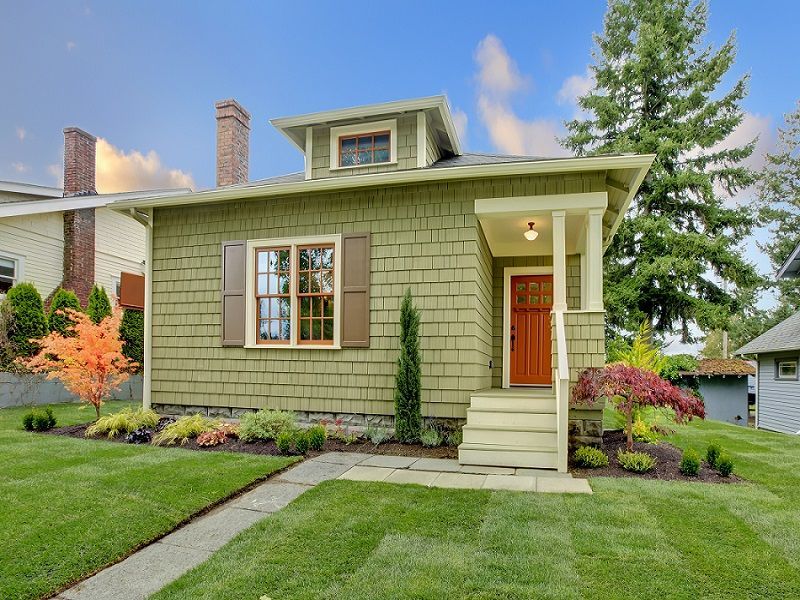
Patios
Patios provide an outdoor space for relaxing, dining, and entertaining. Choose materials that complement your home’s architecture and withstand the elements. Popular patio materials include pavers, concrete, and natural stone.

Walkways
Walkways provide safe and convenient access to different areas of your property. Consider the width and slope of walkways to ensure accessibility for all users. Materials such as gravel, pavers, and flagstone are commonly used for walkways.
Retaining Walls
Retaining walls are used to prevent soil erosion and create level areas in sloped landscapes. They can also be used to create raised planting beds or decorative features. Common materials for retaining walls include concrete blocks, natural stone, and wood timbers.

Driveways
Your driveway is a significant element of your home’s exterior. Choose materials that are durable, attractive, and easy to maintain. Asphalt, concrete, and pavers are common driveway materials.
Creating an Inviting Entrance: The First Impression Matters
Your home’s entrance is the focal point of your curb appeal. Creating an inviting entrance is essential for making a positive first impression. Consider the following elements:
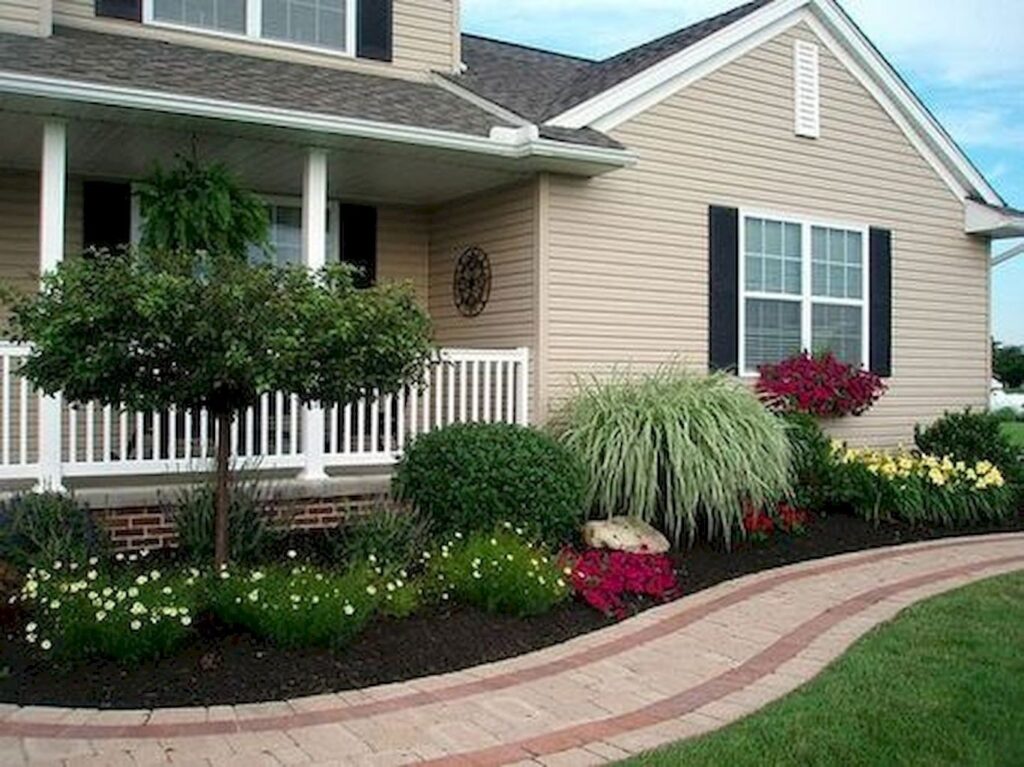
Front Door
Your front door is the centerpiece of your entrance. Choose a door that complements your home’s architectural style and reflects your personal taste. A fresh coat of paint, a new door handle, and decorative hardware can dramatically enhance the appearance of your front door.
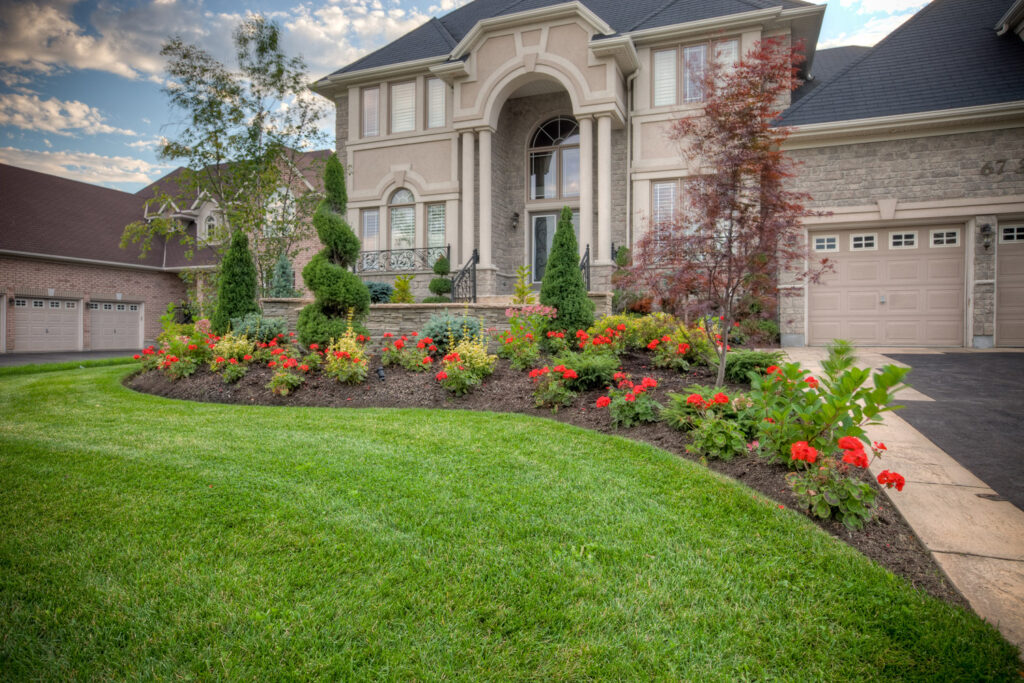
Porch
A well-designed porch provides a welcoming space for guests and enhances the overall curb appeal of your home. Add comfortable seating, potted plants, and decorative accessories to create an inviting atmosphere.
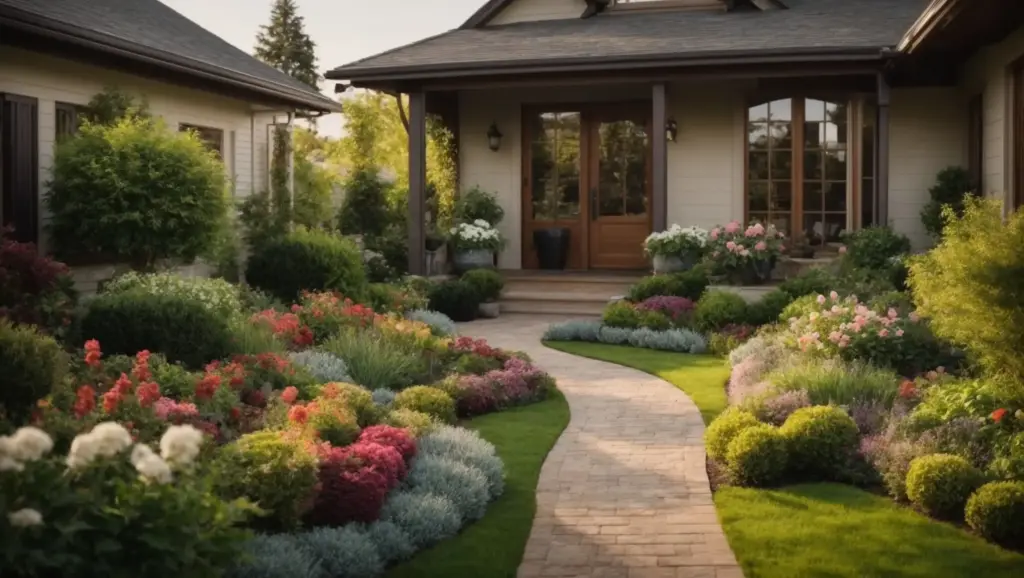
Lighting
Adequate lighting is essential for creating a safe and welcoming entrance. Install porch lights, pathway lights, and accent lighting to illuminate your entrance and highlight its features.
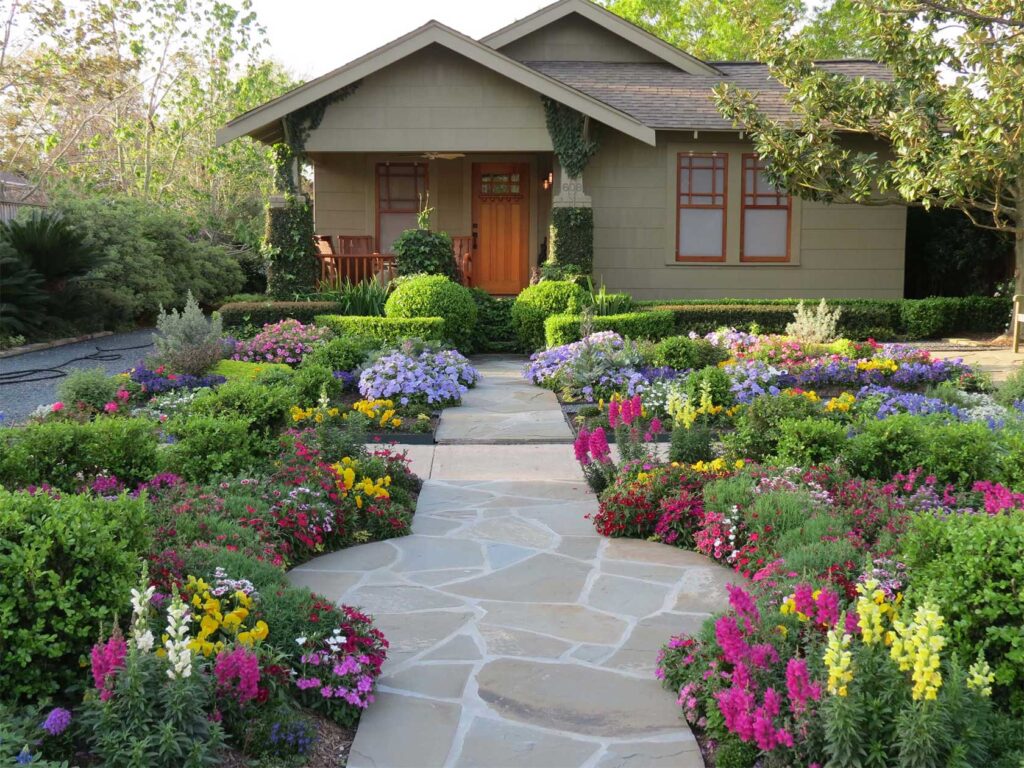
Landscaping
Well-maintained landscaping can dramatically enhance the appearance of your entrance. Plant flowers, shrubs, and trees to create a colorful and inviting space.
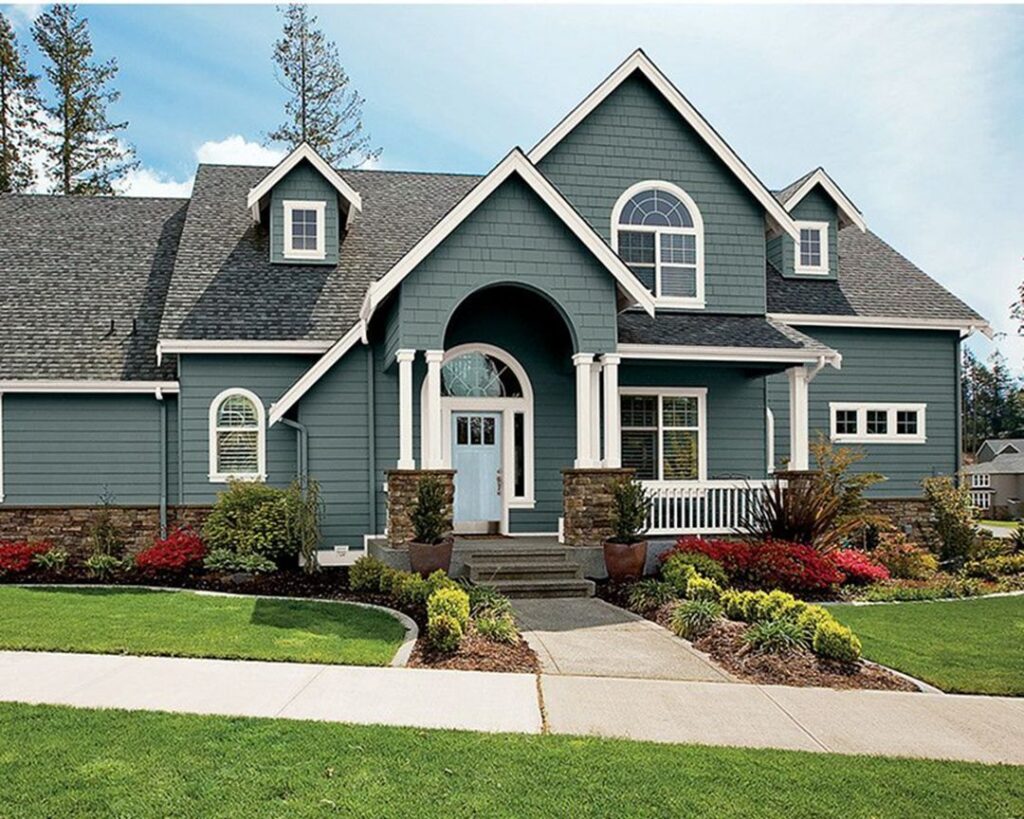
House Numbers
Ensure that your house numbers are clearly visible and easy to read from the street. Choose numbers that complement your home’s architectural style and add a touch of personality.
DIY vs. Professional Design: Knowing Your Limits
While many aspects of house outside design can be tackled as DIY projects, there are certain situations where hiring a professional designer or contractor is recommended. Consider the following factors when deciding whether to DIY or hire a professional:
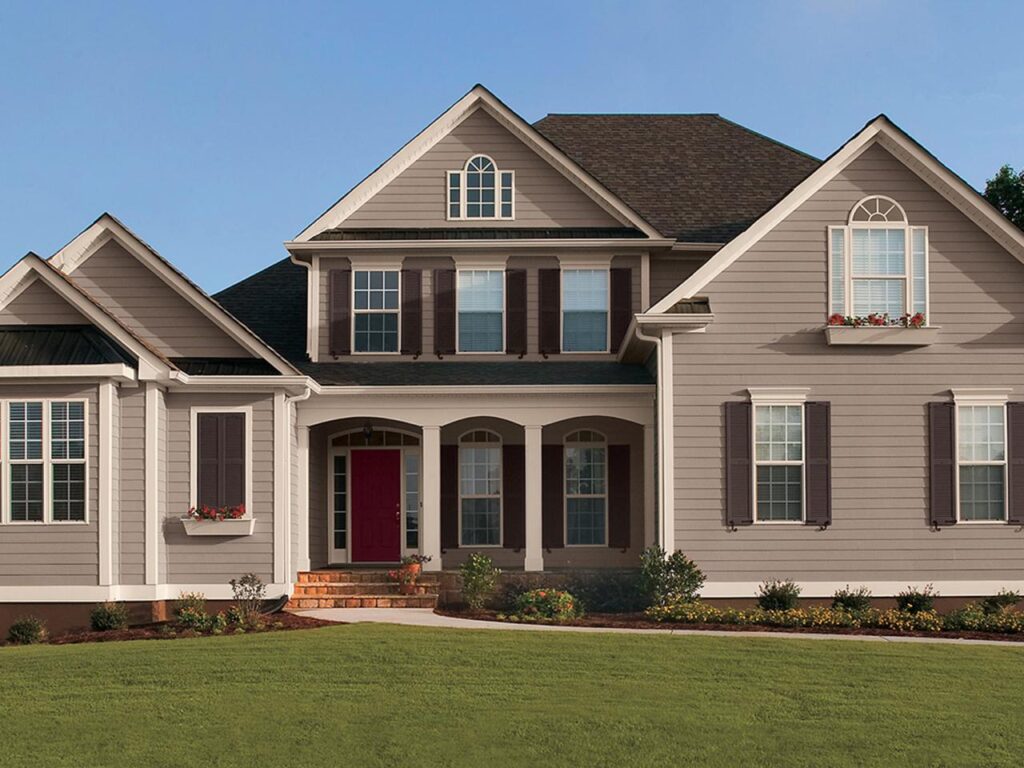
Scope of the Project
If you’re planning a major renovation or landscaping project, hiring a professional designer can save you time, money, and headaches. Professionals have the expertise and experience to manage complex projects and ensure that they are completed on time and within budget.
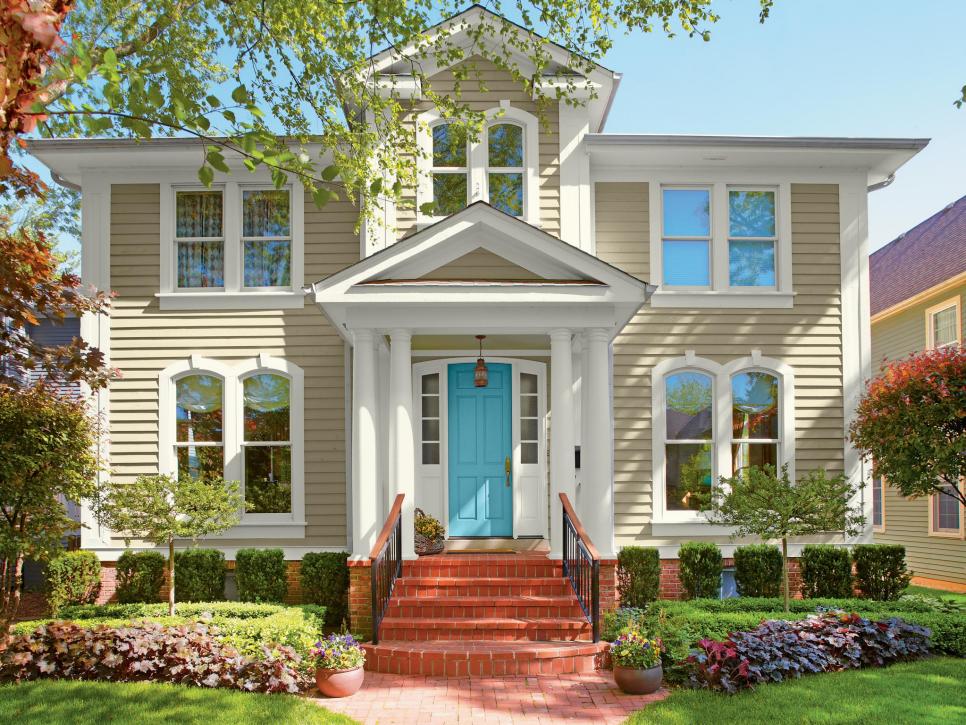
Your Skill Level
Be honest about your skill level and experience before tackling any DIY project. If you’re not comfortable with basic construction tasks, such as carpentry, plumbing, or electrical work, it’s best to hire a professional.
Time Commitment
DIY projects can be time-consuming and require a significant commitment. If you have a busy schedule, hiring a professional can free up your time and allow you to focus on other priorities.
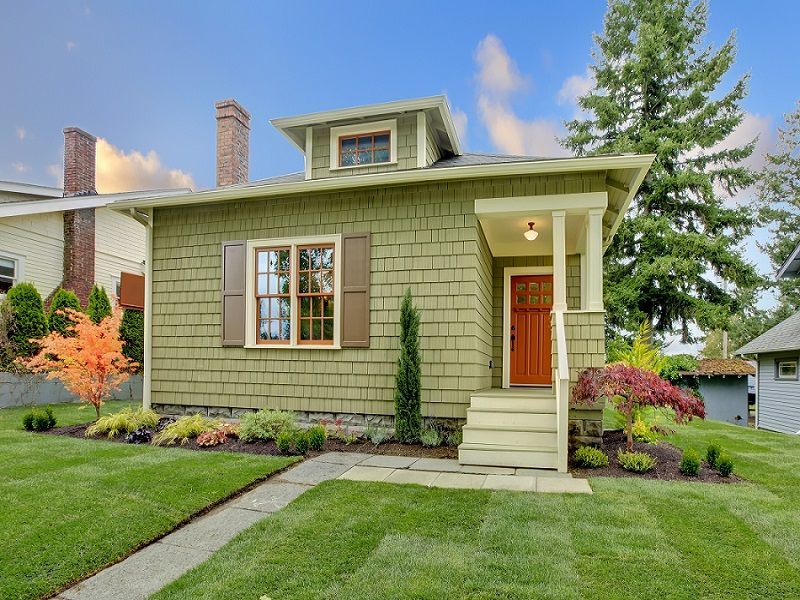
Permits and Regulations
Some landscaping and renovation projects may require permits from your local government. Professionals are familiar with local building codes and regulations and can help you obtain the necessary permits.
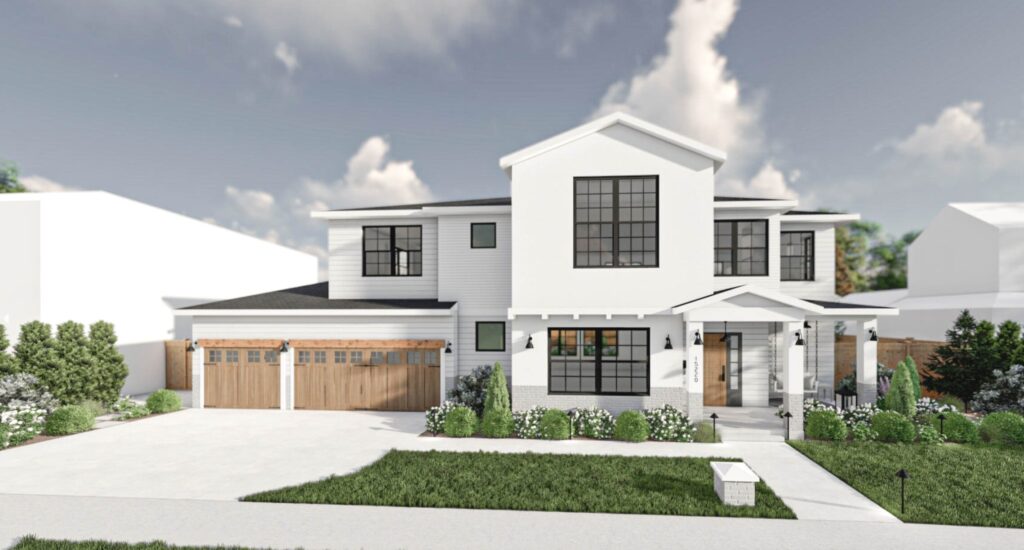
Maintenance and Upkeep: Preserving Your Investment
Once you’ve invested in your house outside design, it’s important to maintain it properly to preserve its beauty and value. Regular maintenance can prevent costly repairs and ensure that your home’s exterior looks its best for years to come. Consider the following maintenance tasks:
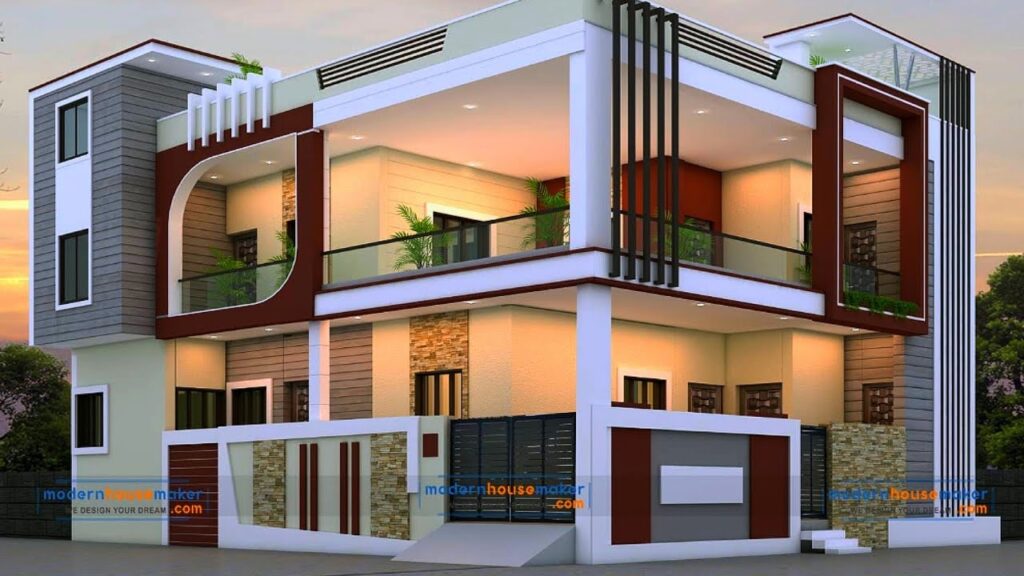
Regular Cleaning
Wash your home’s exterior regularly to remove dirt, dust, and grime. Use a mild detergent and a soft-bristled brush to avoid damaging the surfaces. Pressure washing can be effective, but use caution to avoid damaging siding or paint.
Landscaping Maintenance
Maintain your landscaping by pruning trees and shrubs, weeding flower beds, and mowing the lawn regularly. Fertilize your plants to promote healthy growth.
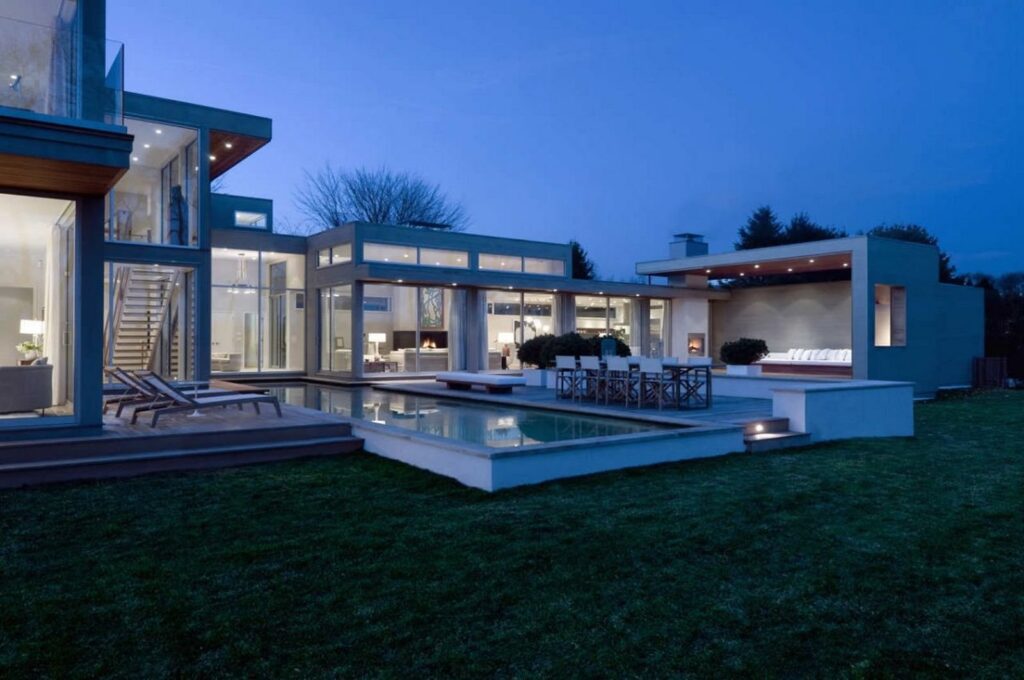
Repairs
Address any repairs promptly to prevent further damage. Repair cracked siding, leaking roofs, and damaged walkways as soon as possible.

Painting and Staining
Repaint or restain your home’s exterior every few years to protect it from the elements and maintain its appearance. Choose high-quality paints and stains that are designed for exterior use.
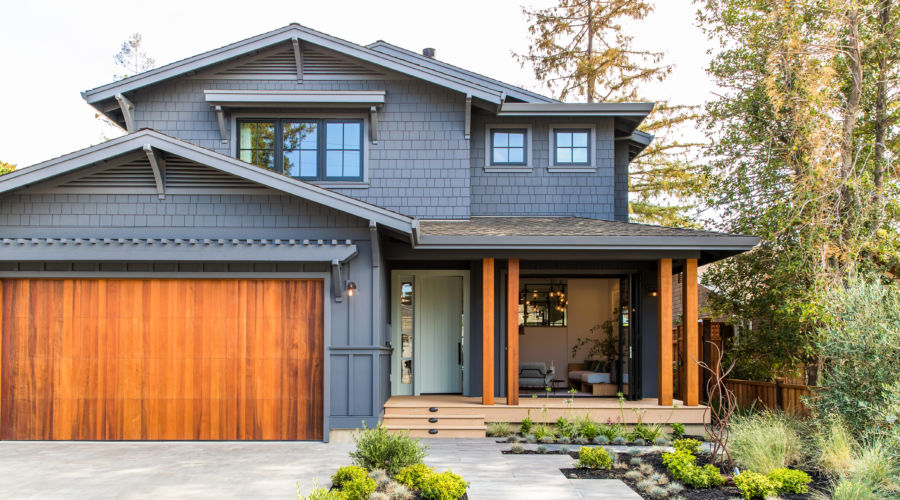
Conclusion: Transforming Your Home’s Exterior into a Showcase
Investing in house outside design is an investment in your home’s value, curb appeal, and overall enjoyment. By understanding architectural styles, applying landscaping principles, choosing appropriate color palettes and materials, and incorporating outdoor lighting, you can transform your home’s exterior into a captivating showcase that reflects your unique personality and enhances your everyday life. Whether you choose to tackle DIY projects or hire a professional designer, the key is to plan carefully, pay attention to detail, and prioritize quality and durability. With a little effort and creativity, you can create an outdoor space that you’ll be proud to call home.
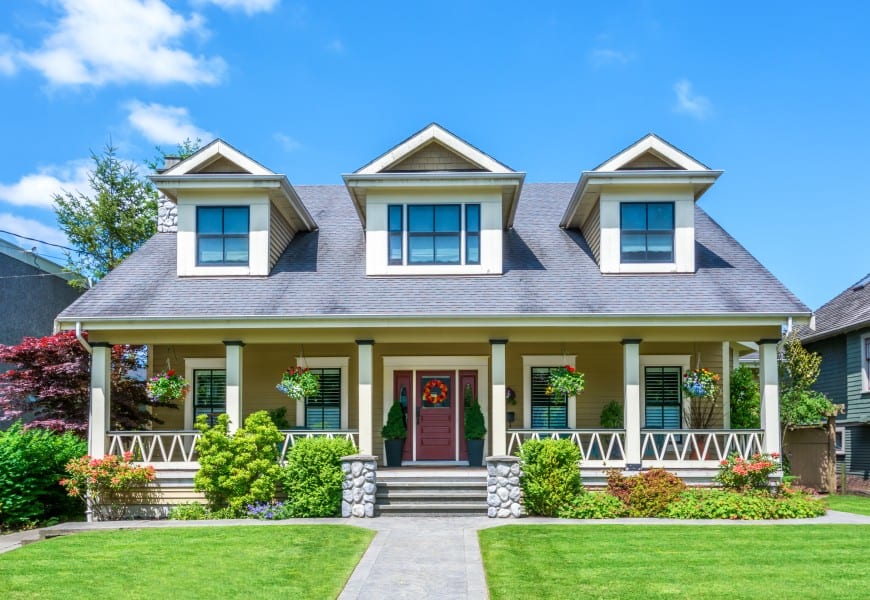
 Nimila
Nimila
